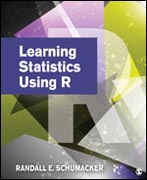
Students will not only learn how to use a formula to calculate a statistic, but also how the specific statistic fits into the overall research process from start to finish. Overall, statistics is placed in the context of conducting research to answer statistical hypotheses, all while using discussion, explanations, and examples that include R functions to enrich students' understanding of statistics. INDICE: PART I. Introduction and Background1. R Basics 2. Research Methods3. Probability 4. Sampling and PopulationsPART II. Statistical Theory and Inference5. Central Limit Theorem6. Sampling Distributions 7. Statistical Distributions PART III. Descriptive Methods8. Graphing Data9. Central Tendency and Dispersion PART IV. Statistical Methods10. Hypothesis Testing11. Chi-Square Test for Categorical Data 12. z Test for Differences in Proportions 13. t Test for Mean Differences (2 groups) 14. F Test for Mean Differences (3 or more groups)15. Correlation Tests of Association 16. Linear Regression Tests of Prediction17. Multiple Regression18. Logistic Regression19. Loglinear RegressionPART V. Replication and Validation of Research Findings20. Replication of Statistical Tests21. Synthesis of Research FindingsGlossary of Terms Glossary of Packages, Functions, and Commands Used in BookStatistical TablesGuide for Selecting a Statistical Test
- ISBN: 978-1-4522-8629-7
- Editorial: SAGE Publications, Inc
- Encuadernacion: Rústica
- Páginas: 696
- Fecha Publicación: 31/03/2014
- Nº Volúmenes: 1
- Idioma:
